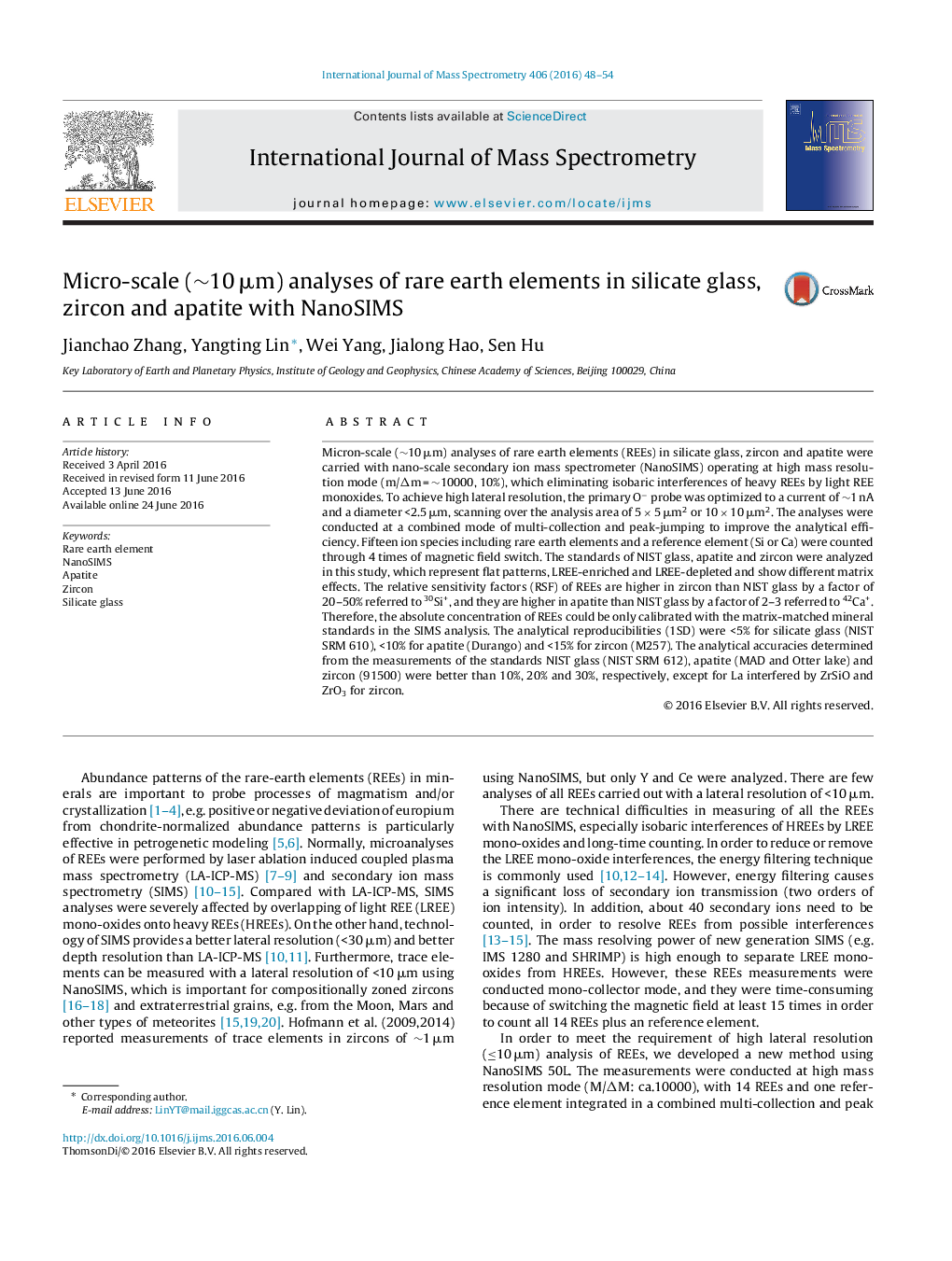| کد مقاله | کد نشریه | سال انتشار | مقاله انگلیسی | نسخه تمام متن |
|---|---|---|---|---|
| 1192560 | 1492226 | 2016 | 7 صفحه PDF | دانلود رایگان |
• All REEs of silicate glass, zircon and apatite were analyzed at a high mass resolution mode (m/Δm = ∼10000, 10% definition) using NanoSIMS, which eliminates isobaric interference of light REE monoxide to heavy REE.
• The analysis was performed at a combined mode of multi-collection and peak jumping, in order to increase analytical efficiency.
• Relative sensitivity factors (RSF) of REEs have been determined from the silicate glass, zircon and apatite standards.
• The highest lateral resolution of REEs analyses up to 10 × 10 μm2 has been achieved.
Micron-scale (∼10 μm) analyses of rare earth elements (REEs) in silicate glass, zircon and apatite were carried with nano-scale secondary ion mass spectrometer (NanoSIMS) operating at high mass resolution mode (m/Δm = ∼10000, 10%), which eliminating isobaric interferences of heavy REEs by light REE monoxides. To achieve high lateral resolution, the primary O− probe was optimized to a current of ∼1 nA and a diameter <2.5 μm, scanning over the analysis area of 5 × 5 μm2 or 10 × 10 μm2. The analyses were conducted at a combined mode of multi-collection and peak-jumping to improve the analytical efficiency. Fifteen ion species including rare earth elements and a reference element (Si or Ca) were counted through 4 times of magnetic field switch. The standards of NIST glass, apatite and zircon were analyzed in this study, which represent flat patterns, LREE-enriched and LREE-depleted and show different matrix effects. The relative sensitivity factors (RSF) of REEs are higher in zircon than NIST glass by a factor of 20–50% referred to 30Si+, and they are higher in apatite than NIST glass by a factor of 2–3 referred to 42Ca+. Therefore, the absolute concentration of REEs could be only calibrated with the matrix-matched mineral standards in the SIMS analysis. The analytical reproducibilities (1SD) were <5% for silicate glass (NIST SRM 610), <10% for apatite (Durango) and <15% for zircon (M257). The analytical accuracies determined from the measurements of the standards NIST glass (NIST SRM 612), apatite (MAD and Otter lake) and zircon (91500) were better than 10%, 20% and 30%, respectively, except for La interfered by ZrSiO and ZrO3 for zircon.
Micron-scale analyses of all rare earth elements (REEs) in silicate glass, zircon and apatite were conducted with NanoSIMS at a high mass resolution mode, which eliminated isobaric interference of light REE monoxide to heavy REE. All the ion species were measured in multi-collection combined peak jumping. The external reproducibilities (1SD) for silicate glass, zircon and apatite are better than 5%, 15% and 10%, respectively.Figure optionsDownload high-quality image (88 K)Download as PowerPoint slide
Journal: International Journal of Mass Spectrometry - Volume 406, 1 August 2016, Pages 48–54
